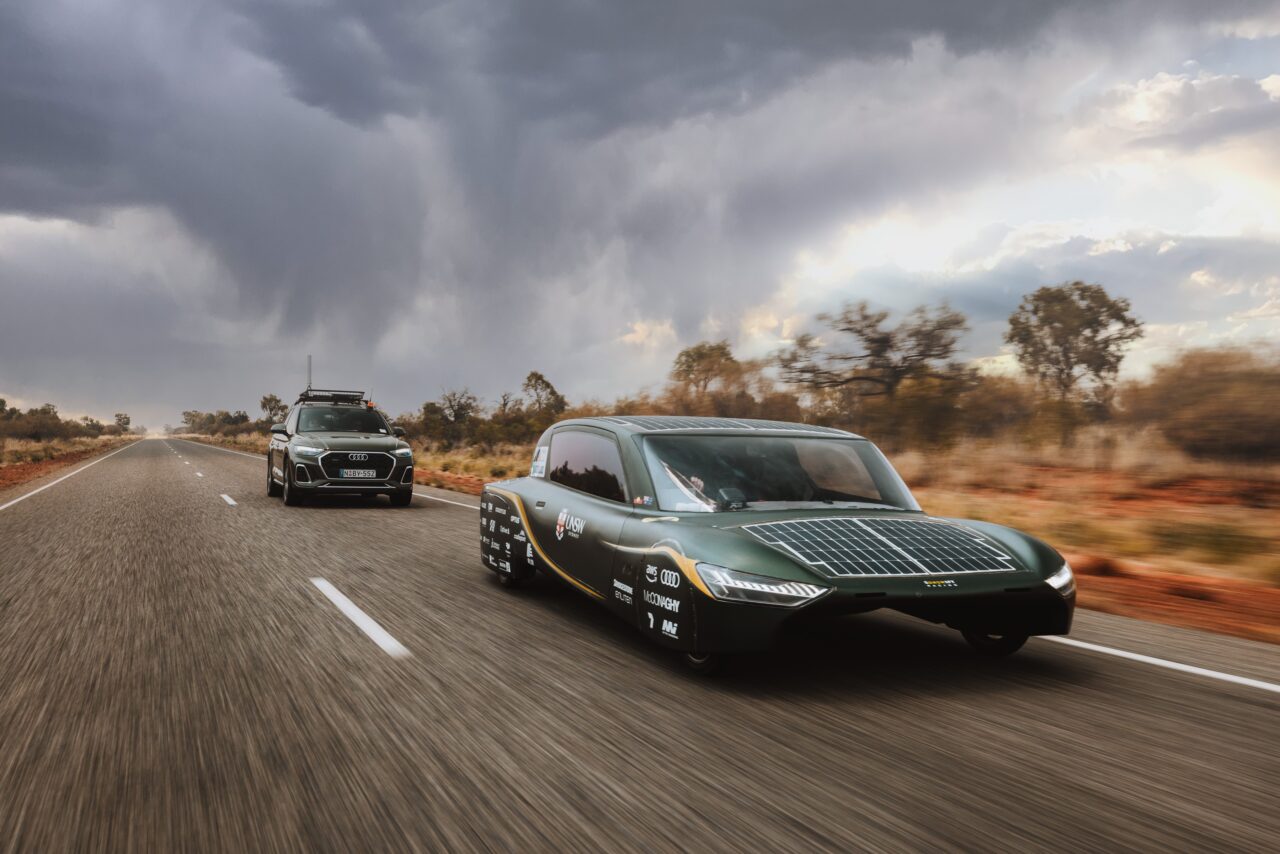In the world’s largest solar race car event of the year, the University of New South Wales Sunswift Racing team is having its day in the sun.
The World Solar Challenge, which first began some 35 years ago, attracts academic participants from across the globe. This year’s event drew nearly 100 competitors.
The race runs nearly 1,900 miles over the course of about four days and pits challengers in a battle not for speed but for greatest energy efficiency.
UNSW Sydney won the energy efficiency competition and crossed the finish line first, taking the Cruiser Cup with its Sunswift 7 vehicle, which utilizes NVIDIA Jetson Xavier NX for energy optimization. It was also the only competitor to race with 4 people on board and a remote mission control team.
“It’s a completely different proposition to say we can use the least amount of energy and arrive in Adelaide before anybody else, but crossing the line first is just about bragging rights,” said Richard Hopkins, project manager at Sunswift and a UNSW professor. Hopkins previously managed Formula 1 race teams in the U.K.
Race organizers bill the event, which cuts across the entire Australian continent on public roads — from Darwin in the north to Adelaide in the south — as the “world’s greatest innovation and engineering challenge contributing to a more sustainable mobility future.” It’s also become a launchpad for students pursuing career paths in the electric vehicle industry.
Like many of the competitors, UNSW is coming back after a three-year hiatus from the race due to the COVID-19 pandemic, making this year’s competition highly anticipated.
“Every single team member needs to understand what they’re doing and what their role is on the team and perform at the very best during those five-and-a-half days,” said Hopkins. “It is exhausting.”
All In on Energy Efficiency
The race allows participants to start with a fully charged battery and to charge when the vehicles stop for the night at two locations. The remaining energy used, some 90%, comes from the sun and the vehicles’ solar panels.
UNSW’s seventh-generation Sunswift 7 runs algorithms to optimize for energy efficiency, essentially shutting down all nonessential computing to maximize battery life.
The solar electric vehicle relies on NVIDIA Jetson AI to give it an edge across its roughly 100 automotive monitoring and power management systems.
It can also factor in whether it should drive faster or slower based on weather forecasts. For instance, the car will urge the driver to go faster if it’s going to rain later in the day when conditions would force the car to slow down.
The Sunswift 7 vehicle was designed to mostly drive in a straight line from Darwin to Adelaide, and the object is to use the least amount of power outside of that mission, said Hopkins.
“Sunswift 7 late last year was featured in the Guinness Book of World Records for being the fastest electric vehicle for over 1,000 kilometers on a single charge of battery,” he said.
Jetson-Based Racers for Learning
The UNSW team created nearly 60 design iterations to improve on the aerodynamics of the vehicle. They used computational fluid dynamics modeling and ran simulations to analyze each version.
“We didn’t ever put the car through a physical wind tunnel,” said Hopkins.
The technical team has been working on a model to determine what speed the vehicle should be driven at for maximum energy conservation. “They’re working on taking in as many parameters as you can, given it’s really hard to get good driving data,” said Josh Bramley, technology manager at Sunswift Racing.
Sunswift 7 is running on the Robot Operating System (ROS) suite of software and relies on its NVIDIA Jetson module to process all the input from the sensors for analytics, which can be monitored by the remote pit crew back on campus at UNSW.
Jetson is used for all the control systems on the car, so everything from the accelerator pedal, wheel sensors, solar current sensors and more are processed on it for data to analyze for ways AI might help, said Bramley. The next version of the vehicle is expected to pack more AI, he added.
“A lot of the AI and computer vision will be coming for Sunswift 8 in the next solar challenge,” said Bramley.
More than 100 students are getting course credit for the Sunswift Racing team work, and many are interested in pursuing careers in electric vehicles, said Hopkins.
Past World Solar Challenge contestants have gone on to work at Tesla, SpaceX and Zipline.
Talk about a bright future.
Learn more about the NVIDIA Jetson platform for edge AI and robotics.
